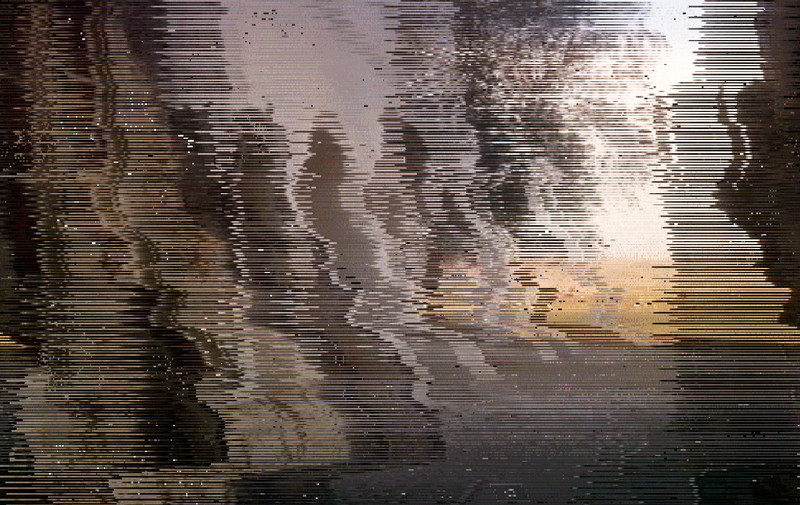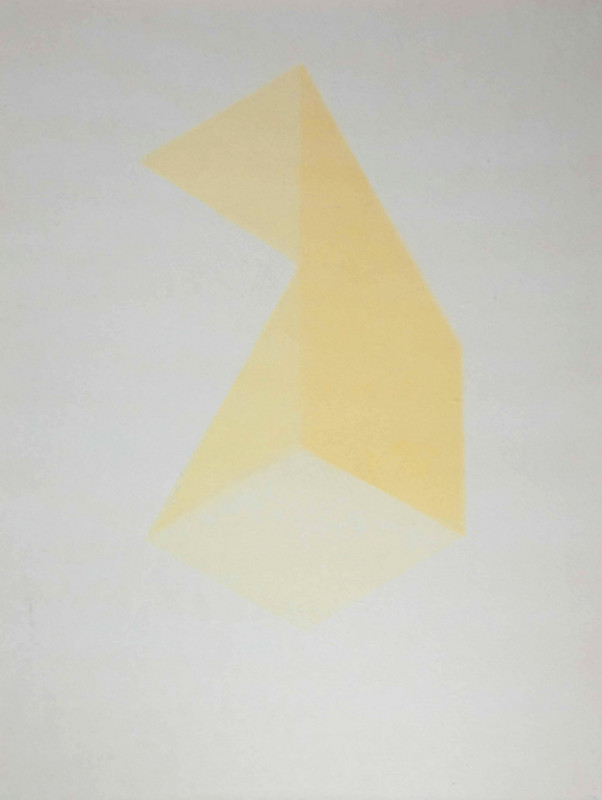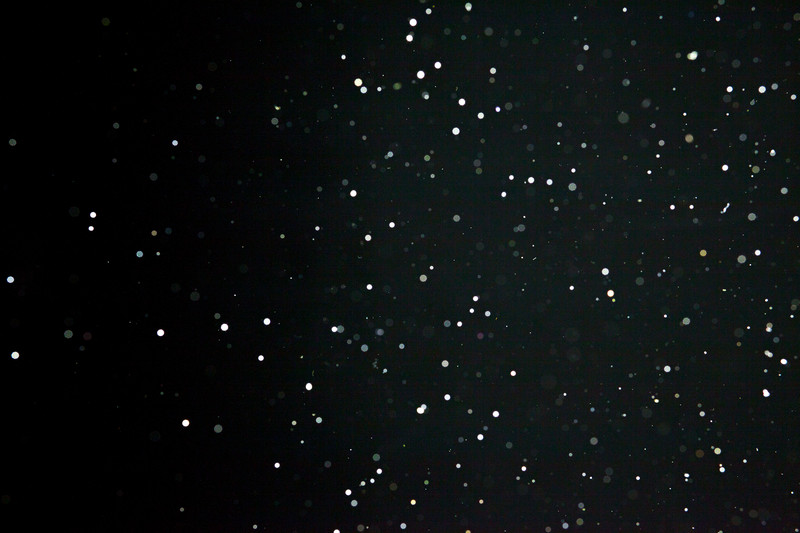GUESTROOM#1: THE EXTRAORDINARY IN THE ORDINARY

Kara J. Schmidt: Cache Ghosts series (Belltower I), 2012
digitally transformed giff, large format print, 44" x 65"
digitally transformed giff, large format print, 44" x 65"

Bill Berger: Radiant Geometries 7, 2012
sun darkened newsprint mounted on masonite, 19" x 14"
sun darkened newsprint mounted on masonite, 19" x 14"

Bill Berger: Dust Portrait 2, 2013
dust, photograph, 24" x 36"
dust, photograph, 24" x 36"
On view will be works by Kara J. Schmidt from New York and Bill Berger from Chicago, who deal with the perception of the everyday—be it dust, shafts of sunlight, or a Hitchcock movie—and present the banal in an unusual way. Within their working process, both artists leave a lot of space for chance and accidents, and thus, sharpen the perception of the viewer.
(please scroll down for a detailed text)
//
THE EXTRAORDINARY IN THE ORDINARY
Bill Berger & Kara J. Schmidt
at guestroom#1, a project by Conny Becker
a one-day-exhibition
with brunch
November 10, 2013
from noon till 3pm
762 St Marks Ave apt. 1F - Brooklyn NY 11216
//
Am Sonntag, den 10. November, findet in meiner temporären Bleibe in Brooklyn die erste GUESTROOM-Ausstellung zusammen mit einem Brunch statt. Die Idee zu dieser Reihe hatte ich bereits vor etwa zwei Jahren in Berlin, da mein Gästezimmer zu häufig ungenutzt ist. Doch offenbar musste ich erst in New York ein Wohnzimmer mit leeren Wänden und wenig Möbeln vorfinden, um guestroom#1 tatsächlich zu realisieren.
Zu sehen sind Arbeiten von Kara J. Schmidt aus New York und Bill Berger aus Chicago, die sich mit der Wahrnehmung von Alltäglichem auseinandersetzen – sei es Staub, Sonnenstrahlen oder einem Hitchcock-Film – und uns ungewohnt vor Augen führen. Beide räumen in ihrem Arbeitsprozess dem Zufall und unvorhersehbaren Missgeschicken einen breiten Platz ein und schärfen mit ihren Werken die Wahrnehmung der Betrachter.
//
guestroom#1
THE EXTRAORDINARY IN THE ORDINARY
The Taoist approach, recognizing the extraordinary in the ordinary, was an essential philosophical mindset within the Fluxus movement in the 1960s and ‘70s. The question of perception—how one perceives the world before and after looking at an artwork—was a central issue in justifying the making of art at all. For many members of Fluxus, their artworks—often called "objects" and created out of everyday material—were not seen as "art" but rather as tools or instruments that could increase awareness of one’s surrounding as opposed to taking the view provided by mass media.
Similarly, the question of perception and awareness drives the artists in the first guestroom exhibition, Kara J. Schmidt from NYC and Bill Berger from Chicago. However, it is not found objects but the mundane and everyday processes that contain hidden phenomena that are of Bill’s interest. Dust, invisible unless hidden on the negative and thus accidentally amplified on a photograph, became his material for abstract portraits of friends. It seems as if Bill—as taught in Taoism—not only accepts unexpected changes but uses them as a concept for his creativity, which finds a parallel in Ken Friedman naming chance operations as one essential criteria for Fluxus. Equivalently, an old faded newspaper can lead to a new series of works, Radiant Geometries—using "found" sunlight to color his precise geometrical shapes.
While Bill in this series seems to domesticate the accidental, Kara follows the opposite approach: for her video piece Atom Recalibration, she initially programmed a perfect turning polyhedron, then repeating what at first was done by accident: messing up the code through "glitching"—changing the code sequence by deleting or copy-pasting or replacing elements or passages, without knowing in advance how the visual will change and always in danger of crashing the computer.
In the 1960s and ‘70s, Fluxus artist Nam June Paik was a pioneer in (by then analog) media art, and manipulated TV-images with strong magnets. Equally interested in mass media, Kara transforms a digital version of an originally 35mm film (Vertigo by Alfred Hitchcock) and deconstructs these found images: gif-documents that receive a painterly quality through her chance operations, just as Paik’s TV-images did.
Describing herself as an intermedia artist, she refers to a term that also has its roots in Fluxus being the first interdisciplinary, global, artist-run arts collective. With the postwar development of commercial air travel Fluxus artist span a worldwide network, a theme that Kara addresses in her video Plasmatic Architecture, which will be completed only with the participation of the audience—walking through it, expanding the network—thus, echoing the concept of most Fluxus pieces. All in all, the exhibition itself is quite "fluxish", starting with a "found" space, mounted in "found conditions", so short that it seems more as a happening. And last but not least, comes the additional element of food which as a subject and an occasion for a collective performance played an important role in Fluxus.
Bon appétit
